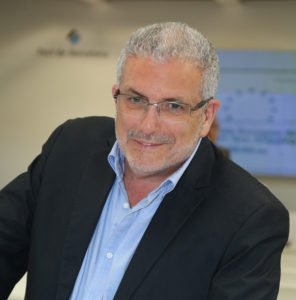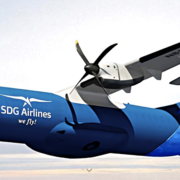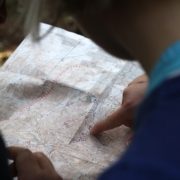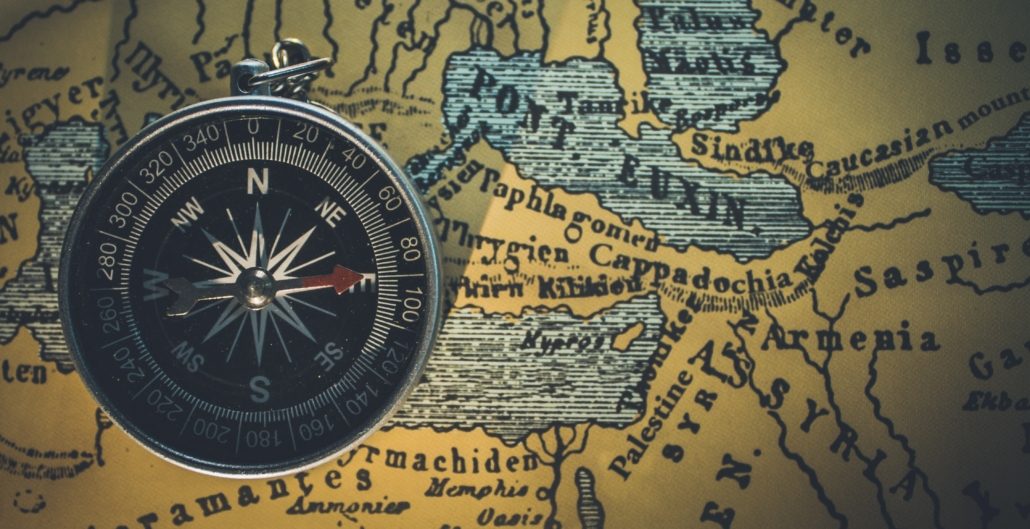We fly!
The Escola takes to the air!


Written by: Eduard Rodés, director of the Escola Europea – Intermodal Transport
Not literally, of course! Traditionally, in our courses, we have always focused on various modalities of transport – excluding air! Air transport was always considered as a costly alternative, and not appropriate for large freight shipments. Over the past two years, however, we have made leaps in virtual education and created new educational and innovation tools based on simulators. Whilst still experiential, the simulators that we now use morphed from the constructivist educational model to a behaviorist one. With this new model, we were also able to add air routes, and so a new air cargo transport company – SDG Airlines – was born: A company full of ambition and born in a logistic-port community in which the air sector plays a fundamental role, and without which it would not be possible to understand the current realities of logistics and transport.
Richard Florida says that human creativity is the last economic resource, and I believe he is quite right. Time has also proven him right. Societies advance by leaps and bounds, and ours has been leaping a lot: COVID, climate change, energy crises, geopolitical crises, are only some of the challenges that have pushed us. Along the way we, as a society, keep trying to move forward relentlessly, and for that it is essential to believe in what we do. We need to think that what we dedicate our time to is important to our society.
In the Escola’s latest leap, pushed perhaps more so with the COVID pandemic, we were forced to develop the a virtual port community – the PortVirtualLab (http://pvl.one). After two years, it has grown to be a very important training tool; one which is already implemented in 7 countries and continues to grow in both scope and performance.
The success of the platform can be assigned to the fact that it allows us to move away from an approach that focuses on the learning of contents to one oriented towards criticism and reasoning, seeking to change the student’s point of view. A different point of view, from within the operations themselves; one that allows the student to take on the role of the protagonist. At the Escola we say that the space we build is an avatar of reality, and what we try to do is to immerse the students in this virtual space. They should think of the simulated companies as real ones – I recommend for you to visit our virtual airline company – SDG Airlines – http://sdgairlines.com– and try to interact with them as you would with any internet entity. At the same time, we make our students work in both close and distant teams to complete the operations. The telematic tools become the means that allow the operations to be carried out. Let’s not forget that the vast majority of people close to us have had the means and have learned to use these tools in the last few months – something that was not necessarily the case at the onset of the pandemic.
The simulated world that we have to create and represent mentally helps us understand and explain the operations. When we are confronted with a given phenomenon, the content of the mental representations we construct depends on the questions we want to answer. It depends on the needs, interests, and emotions of each individual. In our case, this world is represented by international trade operations that require the design and management of international logistic chains that mainly use maritime and air transport.
The companies that we designed companies could be mistaken for real ones, but they have the added characteristic of incorporating values that aim to meaningfully construct knowledge and train for civic life. We hope that our students are convinced that respect and commitment to the environment, people and society is the best way for everyone and that this should guide any business operations. Visual perception, comprehension, reasoning and symbolic interpretation (hermeneutics) influence this construction. Students are guided, in turn, by people’s technical and scientific knowledge, by their previous experiences, by the way in which information is processed and by motivational aspects regarding the context in which they are constructed. Therefore, learning is related to what the student understands, and the student understands only what interests or excites him.
In this construction process, the teacher -or we can call him a mentor- tries to make the student bring to light the knowledge he possesses with his help, which in Socratic thinking would be helping to “give birth” to ideas, but in our environment, this should favor the transformation of culture.
Our PVL platform also fosters personal training and socialization processes as, by its very definition, it is necessary to get to know the people who make up the work teams, as well as the people in the support teams (agents) who are there to help carry out the operations. The participants can engage in a variety of social interactions (such as games that we have not (yet) initiated). This somehow constructs our identity – the one we want to project to others – according to the contexts we encounter in conversations. These conversations allow us to reveal who we are, and that usually brings us satisfaction.
In the part related to cultural change, activities are structured according to certain binding rules regarding what we must do or not do, which will shape the ethical aspects of how we approach and prioritize operations, and what we expect from others.
How to act, how to proceed, and what to expect from others – all are central aspects of our courses. Finally we hope that this process and these activities will lead our students to Areté, to know how to do, and in the manner of the Greeks, to know how to do well (tékhne).
Education becomes a social activity that builds us personally and professionally, and in which practice and communication with others form a process of reciprocal action among participants.
The reality is that we lead students to work together, to get to know each other and to know how to work together. This is difficult to achieve in a normal classroom. We seek to change the space of coexistence traditionally linked to “out of class” activities to a relationship that will allow a collaborative and productive environment that can contribute to the bettering of our society, and therefore to a transformation of the reality that improves it.
In the process of building the platform we have had good teachers, or as Hernán Rodriguez would say, we have had ‘good’ teachers; that is to say, professionals who are not only technically prepared, but also ethically adequate. We therefore propose, as an educational task, the permanent search for excellence (Areté).
We are looking for a type of teacher “who has charisma (gift) and dedication in the art of the Socratic Method: to “illuminate” the best that the student has within himself; allowing the development of the capacities that each one has to transform his life and help transform the lives of others. Here lies the challenge for the teacher. And here is also the challenge for this constructionist proposal”[1].
The courses with pvl.one are a transformative experience for teachers and students, and this has made us fly in the field of education and in the field of intermodal transport.
Now we would like to be able to fly together with teachers, students, and training centers all over the world.
Because we fly!
Sincerely,
Eduard Rodés
Director
Escola Europea – Intermodal Transport
[1] Dr. Hernán Rodríguez Villamil – Del constructivismo al construccionismo: implicaciones educativas. Revista Educación y Desarrollo Social Bogotá, D.C., Colombia – Volumen II – No. 1 enero – junio de 2008 – ISSN 2011-5318




